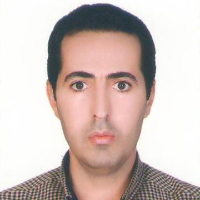Producing rangeland vegetation types map using different algorithms of satellite image classification
Author(s):
Article Type:
Research/Original Article (دارای رتبه معتبر)
Abstract:
To better managing of rangeland the vegetation map is one of major factors, because plant communities is planning units of rangeland management and vegetation map shows the current status of plant communities. This research was conducted to produce vegetation type's map using Landsat 8 image classification in Behbahan, Khuzestan province. Rangelands of the study region is warm semi steppe and winter grazing. Geometric correction of satellite image was performed by ground control points with an error of less than one pixel. Atmospheric correction of existing data using the dark object subtraction was done. Field visits for vegetation type's border controlling and sampling training area was conducted. Eight supervised classification algorithms included Parallelepiped (PP), Minimum Distance to mean (MD), Mahalanobis distance (MAH), Maximum Likelihood (ML), Neural Net (NN) and Support Vector Machine (SVM) was performed. The results showed that ML algorithm has the highest overall accuracy (87.5 percent) and kappa (0.867) and PP algorithm has the lowest overall accuracy (67.1 percent) and kappa (0.571). It is suggested that, along with digital methods of classification of satellite images, visual interpretation should be used to clarify the boundary of the obtained vegetation types map.
Keywords:
Vegetation Type , Semiarid , Classification , Landsat , OLI
Language:
Persian
Published:
Journal of Range and Watershed Management, Volume:71 Issue: 3, 2018
Pages:
847 to 856
https://magiran.com/p1920379
سامانه نویسندگان
مقالات دیگری از این نویسنده (گان)
-
Ecological and Phytosociological Characteristics of Daffodil (Narcissus tazetta L.) in Natural Habitats of Behbahan
Javad Pourrezaei*, Hamideh Urani, Shahram Yusefi Khanghah
Journal of Rangeland, -
The comparison of Artificial Neural Network to and maximum likelihood algorithms for forest changes detection
Parvin Bagherifar *, Reza Basiri, Shahram Yosefi Khaneghah, Hamidreza Pourkhabbaz
Journal of Environmental Sciences and Technology,


